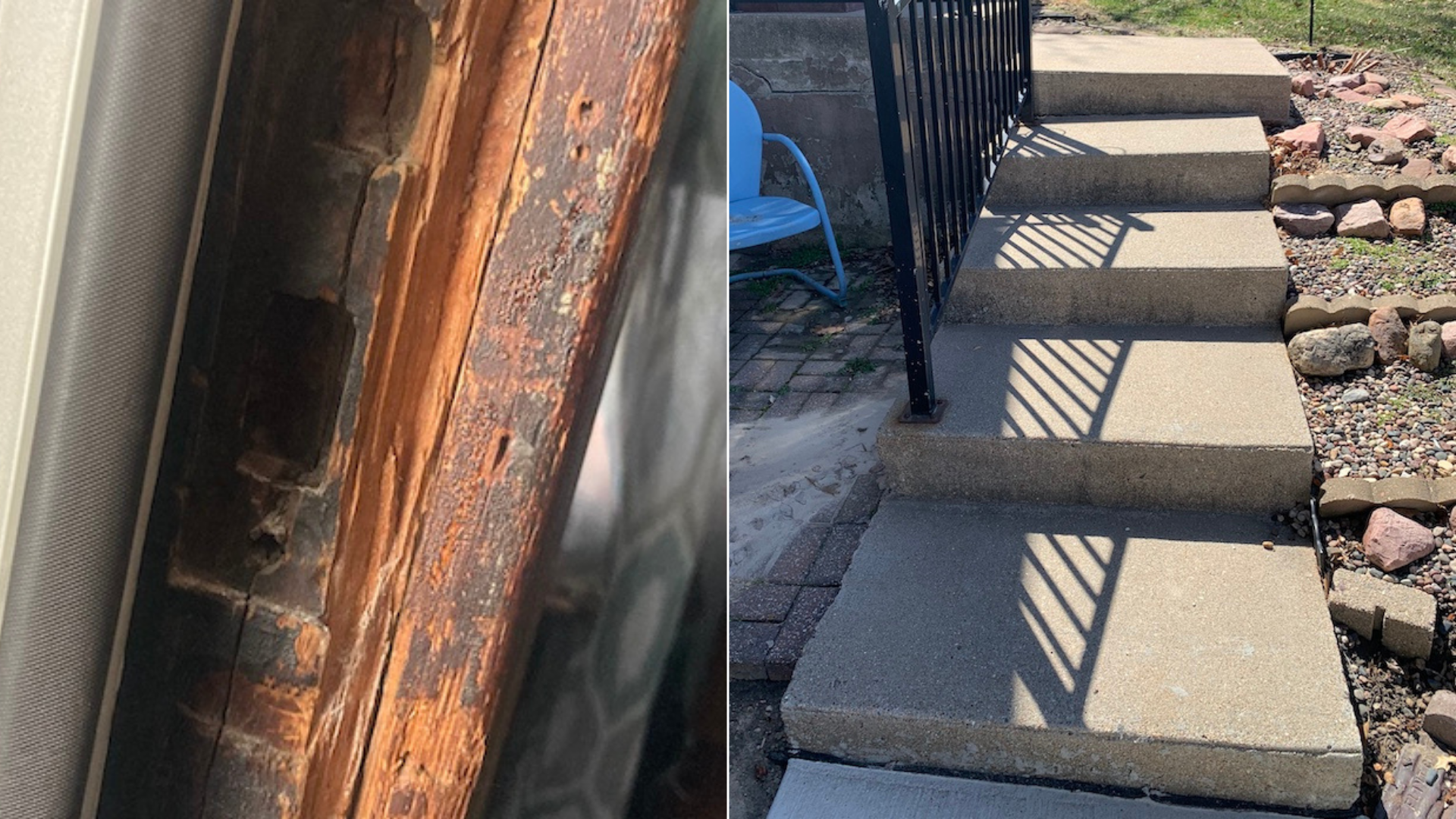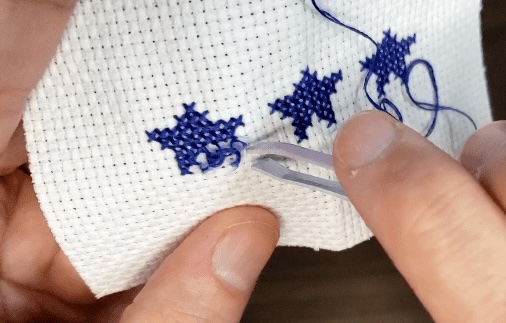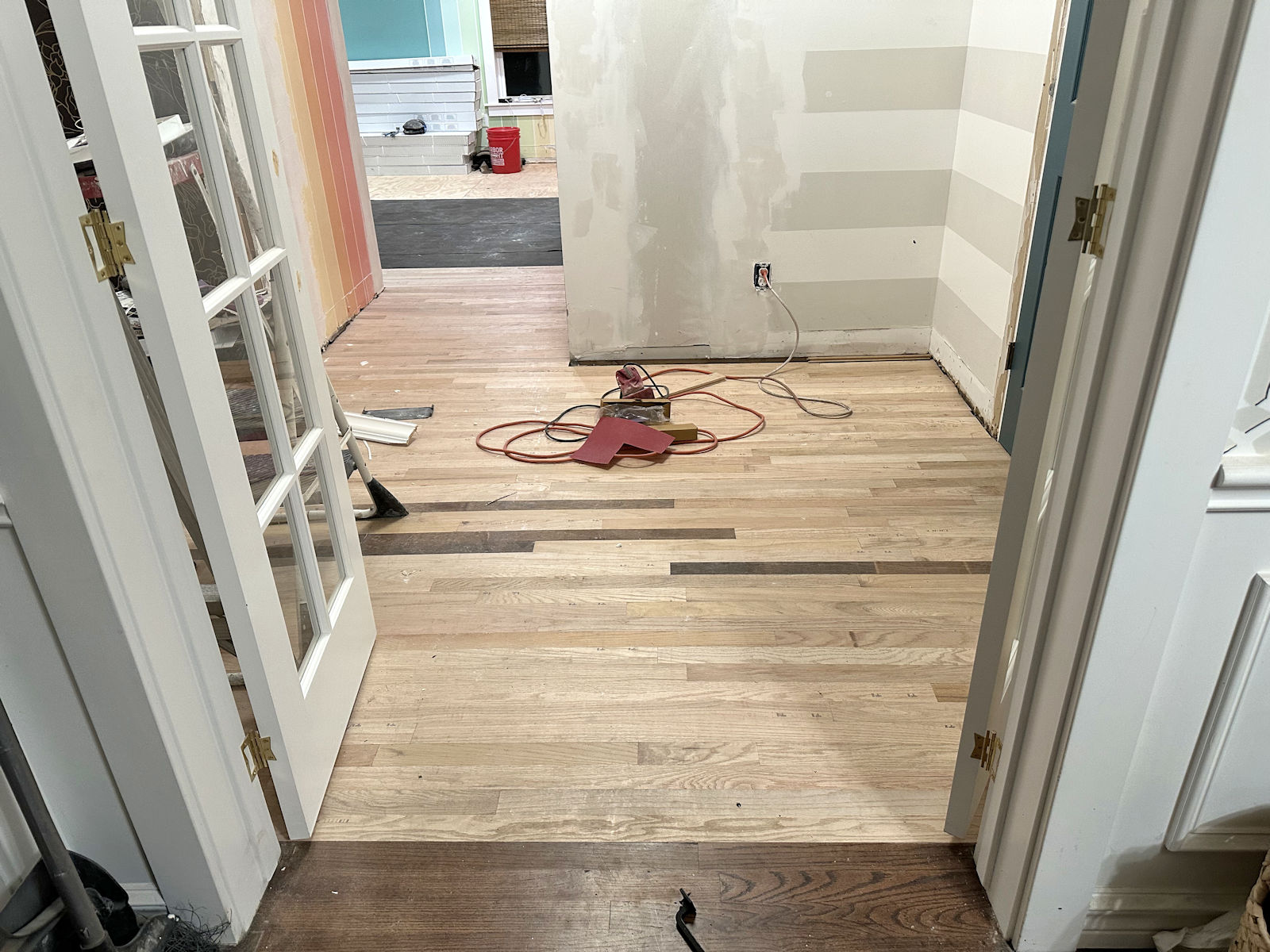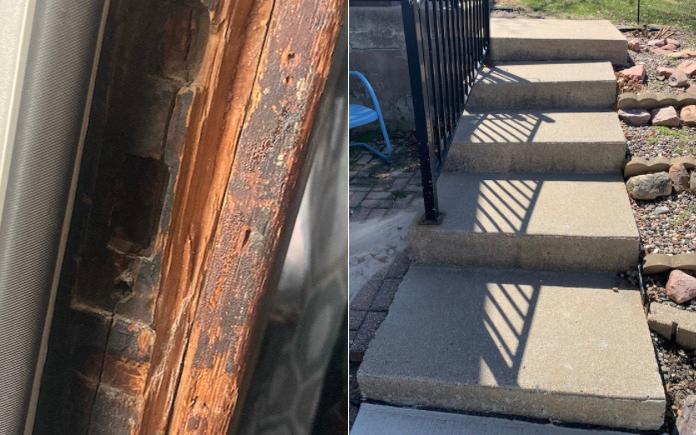
In this week’s show, we give advice on fixing an old door frame, how to repair a shifting concrete landing and what to do to get rid of pet stains on a hardwood floor.
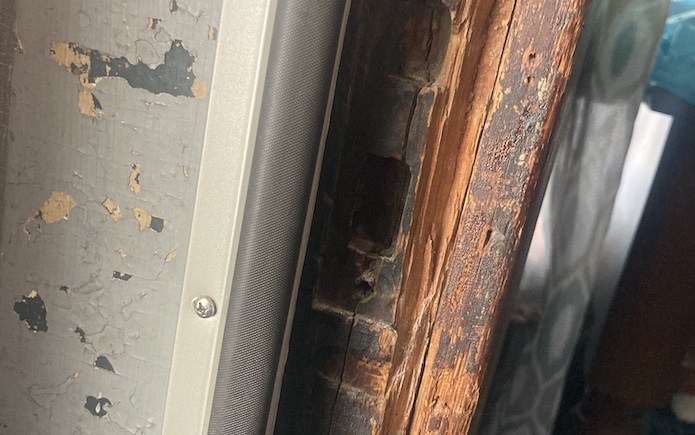
How Can I Fix My Century-Old Door Frame?
The door frame on James Myers’ 100-year-old home was damaged during a break-in. The latch area on the stained wood frame is split, and he’s wondering what he can do to fix it.
The challenge in repairing stained wood is getting the new stain to match the original. You can use auto body repair to sculpt around the latch to match the missing wood.
The problem then is you have a material that’s paintable and not stainable. You could just paint that area with a color that matches the tone of the stained wood.
Otherwise, you will need to replace those pieces of wood and match the stain.
Get a chisel and saw, and square up the area where the door is damaged. Then, cut a piece of wood to fit it and glue it in.
For a split jamb, take a screwdriver and wedge it in to open it up. Squeeze in as much wood glue as you can, and plug it. Get a wooden T or a wooden doll, plug the screw holes and cut it off flush. Drill in some screw shank clearance holes, and drive in some three-inch screws.
Skip to [47:41] for the full segment on the Today’s Homeowner Radio Show.
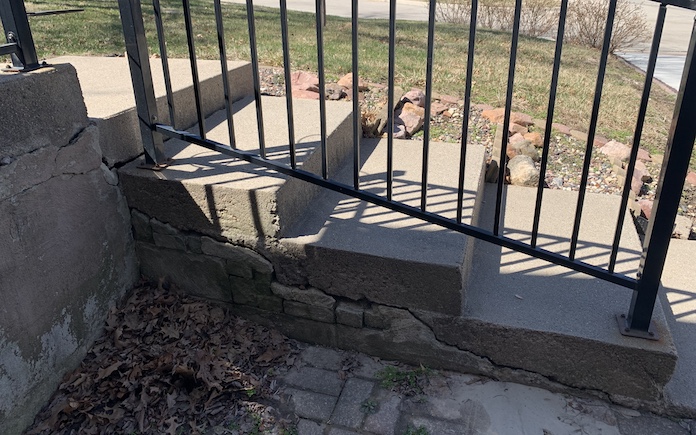
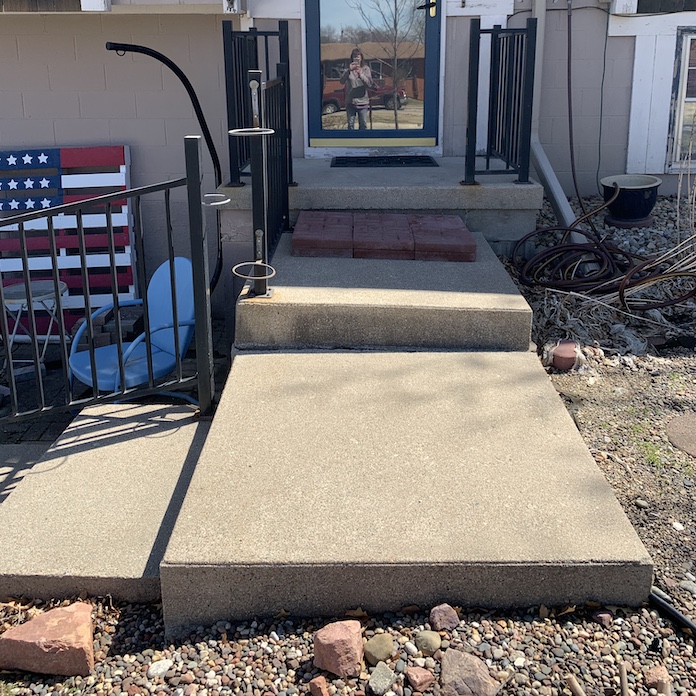


How to Fix This Concrete Landing
Sandra Marn from Iowa is asking wants to know the most cost-effective way to fix the concrete steps and landing leading up to her front door? Is there a way to repair it or does she need to tear it out?
This home’s main landing is in good shape, but the problem is with the steps. With the shifting steps and how they have settled, especially with the handrails attached, it would be difficult to level them.
There are too many cracks and separations to pull it back together for long-term use and still have the steps look nice.
Plus, with the contour of the yard, you would need to remove the areas up to the main landing and bring the sidewalk out more.
There are ways to put a coating over the cracks, but I don’t think this is a candidate for that.
Unfortunately, there is no quick repair. You would need a contractor to come in. With the concrete blocks, poured concrete and concrete sludge, this is not a DIY project.
A contractor could give you a nice entrance with fewer steps.
Skip to [57:54] for the full segment on the Today’s Homeowner Radio Show.
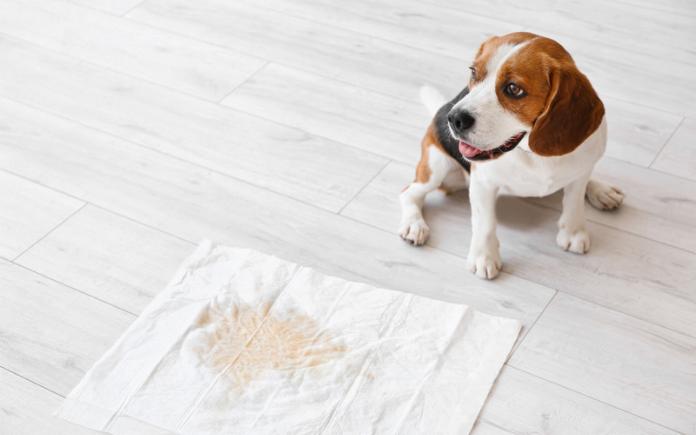
Removing Pet Stains From Hardwood
After removing some old wall-to-wall carpeting, David Ackerman found hardwood floor underneath that had some pet stains. What’s the best to bring this floor back to life?
Pet stains can penetrate deep into the pores of the wood. You can refinish the floor and sand down some of the finish.
Ammonia should kill the stains, but that has varying degrees of success. It depends on how long the stain has been there and how far it’s been soaked into the wood.
To bring it back, you have to sand the whole thing. For any visible stains, try cleaning and bleaching them out and staining the spots to match the floor.
Skip to [1:04:16] for the full segment on the Today’s Homeowner Radio Show.
Around the Yard
This time of year we’re all looking forward to hours spent outside enjoying our yards.
For many of us, that acts as a reminder that our lawns don’t look too good and hopefully motivation to get busy changing that.
Before you decide to till it all under and start a new lawn from scratch, which takes a ton of work and a lot of money, check out these tips.
If you’re looking at a few too many weeds, your first step may be applying a pre-emergent weed killer when you fertilize this spring.
The products that combine these elements are commonly called “weed and feed” products and are usually specific to certain types of grass and/or climate.
Check with the pro at your local garden center to find out what your grass needs in your area.
But that’s just the first step, so don’t stop there. Healthy grass is the best deterrent to weeds, so this is where the work begins.
Begin by mowing regularly. Each mowing should take one-third or less of the grass blade to keep the lawn healthy, so start doing it more frequently to keep weeds at bay.
If your lawn hasn’t gotten rain in a while and you plan to water it, give it a big gulp, not just a sip. Deep watering encourages the roots to grow deep too, so water less frequently for long periods of time.
Around The Yard is brought to you by Pavestone.
Skip to [56:22] for the full segment on the Today’s Homeowner Radio Show.
Also on this episode:
- Removing Kitchen Soffit
- Flooring Choice for a Florida Condo
- Retiling a Bathroom Floor
- Adding a Mantel to a Stone Fireplace
- Resurfacing a Basement
- Backsplashes for a Country Kitchen
- Killing Mold Under a House
Best New Product
 |
The Hampton Smart Fan not only lets you control the breeze but lighting as well! Learn more>> |
Other Products and Links Mentioned
Further Reading
Radio Show: Send us your question!
If you have a comment, general question about home improvement, or something we’ve featured on Today’s Homeowner, please fill in this form:

